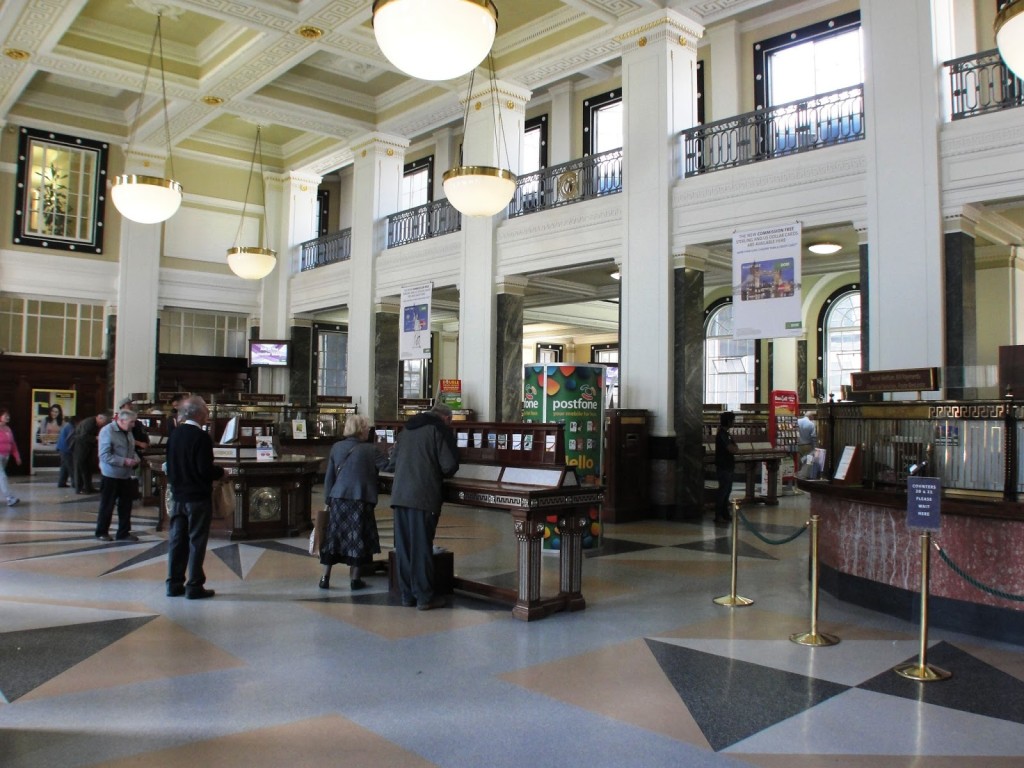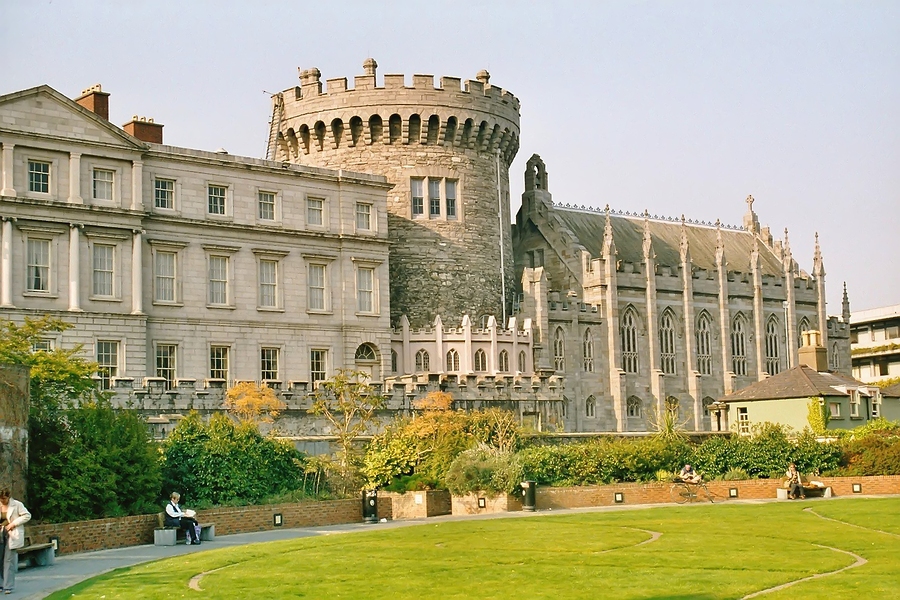Glasnevin Cemetery is the final resting place for well over a million people, and serves as something of a historic marker for a series of events to have befallen Ireland over the past two centuries. Prior to Glasnevin Cemetery’s establishment, there was no place for Catholics in Ireland to bury their deceased, which restricted the proper putting to rest of individuals according to that faith’s traditions.

Glasnevin is one among very few cemeteries to have the distinction of its very own museum, its rich association with Ireland and Dublin history paving the way for displays chronicling how times effected change as ever-growing numbers of departed passed into Glasnevin’s grounds. Within the fields themselves, several notable tombs and sepulchres properly commemorate the distinguished and historic people resting there. Until his death and burial at Glasnevin Cemetery in 2014, historian Shane MacThomais served as its chronicler in chief.

The Jeanie Johnston Tall Ship and Famine Museum is situated around the ship itself, its purpose being to inform visitors about the vessels which played a crucial role in helping Ireland’s native population emigrate in the face of the widespread and devastating famine of the 1840s. The project was conceived in the late 1980s, with the Jeannie Johnston laid down in 1998 after painstaking research into the appearance of the original 19th century vessel.

Given how dramatic, frenetic and historic the hastily arranged emigrations were, the remade Jeannie Johnston serves as a living recreation of the conditions the Irish of that harsh era had to endure and withstand. A simple number speaks volumes: the ship was designed to carry a mere 40 people including, however on one voyage a total of 252 people managed to pack aboard in order to reach foreign shores.
The Green On Red Gallery is one of Dublin’s best spots for the absorption and enjoyment of contemporary art. Hosting artwork by some of the bigger names in postmodernist design, the gallery attracts visitors in sudden spates owing to its intermittent exhibitions. Other than its formal openings, the Green on Red is a veritable hive for the connoisseur keen to boost his collection, its thematic approach to showcasing commonly leading to sudden frenzies of indulgence by casual visitors and stalwart authorities alike.

Its opening times – Wednesdays through Saturdays in the daytime hours – are as distinct and unusual as the many pieces on display within its whitewashed walls and impeccably lit floor space. Each separate installation’s beauty and statements (or lack thereof) are a hazard for any art lover to miss out on: simply put, the Green On Red is quintessentially unmissable.
St Stephen’s Green is a beautiful historic park in the centre of Dublin. It’s a green and wooded break to the many instances of ornate, flanking Irish architecture. The stateliness of the district is matched by the beautiful lawns, carefully arranged flowers, graceful weeping willows and lime trees and idyllic pond. St Stephen’s combines perfectly the stateliness of a fine tended garden with the recreational casualness of the public park.

Photographed for 150 years, the park has been a stopping off point for visitors to Dublin for centuries. Pilgrims, merchants, visiting businesspeople and locals alike congregate between its verdant lawns and prim flowerbeds to wile away time beneath the sky. It is also home to many historic tributes, wherein events in Irish history such as the Great Famine and people such as Robert Emmet are commemorated in plaques and statues.
The General Post Office enjoys the distinction of being one of Ireland’s most iconic buildings. It’s a place serving as something of a crucible for the Dubliner and for Irish history. It was the starting point for the Irish Revolution in the years after World War I that saw Ireland return to home rule, with control wrested from the bloodied British. Bullet holes still riddle its walls long after partisans – charged with furies fostered by decades of national oppression – rose with wrath and fervour to oust their rulers.

Those well-informed of Dublin’s past will benefit greatest from visiting a building which, at a passing glance, can seem like a simple instance of stateliness. The General Post Office is in fact a place deserving of investigation and respect – between its undoubted allure as a historic visitor venue, the place continues to function as the headquarters of Ireland’s postal service, An Post.

Christ Church Cathedral in Dublin a moving example of Medieval Gothic architecture, fusing elements of that then-prevalent style with a touch of the Classicist. Having stood since the Middle Ages in its present state, Christ Church harbours many stories and is replete with a rich legacy of religiosity. Visitors report a sense of stillness and calm beneath the interior’s foreboding Gothic arches, with any question of trepidation relieved by the friendly and amenable staff offering frequent tours.

One of the cathedral’s greatest distinctions is its colossal crypt which received renovation at the start of the 21st century. Favourites such as the mummified rat and cat enjoy pride of place here, with other notables including the old stocks which were used to punish and humiliate wrongdoers in the 17th and 18th centuries. Christ Church Cathedral Dublin is of course a centre for religious events and happenings: the seat of the Archbishop of Dublin sees regular events, with the festive Mass particularly moving, the warmth gracious in an atmosphere of ancient stone and pane glass.

The Dublin Writers Museum is situated within a former 18th century home, which was specially selected by Ireland’s arts authority as a place fittingly ornate and magisterial to host profiles and accounts of some of the country’s best-known authors. Interested visitors can absorb the legacies of Ireland’s literary luminaries from centuries past, from the highly famed James Joyce to many lesser-known but doubtlessly important figures.

Literature is wholly embraced within the tour area, with the playwright George Bernard Shaw, and poet William Yeats given dignified and illustrative place. The venue is accompanied by a small souvenirs stall, with a café close by for visitors to relax and soak in the momentousness that Ireland and Dublin’s greatest writers still confer through words timeless and powerful.

Dublin Zoo is one of Dublin’s top family destinations, with hundreds of animals including giraffes, lemurs, orangutans and recently a female baby lion cub. The zoo has received much investment in recent years, improving the facilities for both the animals and visitors, with creature habitats receiving expansion by builders with the knowledgeable supervision of the zookeepers and wildlife specialists.

For families both in and outside of Ireland, Dublin Zoo represents one of the major hotspots to visit for a great day out. Realizing this, the zoo’s administration include opportunities for kids to learn more about the creatures living in the zoo, while great parking facilities, a souvenir shop, numerous restaurants and nearby hotel accommodation ensure visitors are well provided for.

Temple Bar is Dublin’s hottest area for nightlife and food, it being host to a bunch of scenic and beautiful pubs, bars and clubs alongside the scenic River Liffey. Situated close to the central retail districts of Dublin, Temple Bar is a firm favourite with tourists looking to have a lovely meal out or a few drinks of an evening. The modern and the traditional clash in a way that preserves the Dubliner charm so many visit the place to savour year after year.

A highlight of several venues in Temple Bar is the traditional music, with local musicians and bands with fiddles and accordions ready to serenade your evening. As well as ordinary pub grub, eateries and restaurants in the area are keen to emphasize traditional meals: Irish stew, local fresh caught oysters in sauce, and pots of Colcannon comprise popular choices upon many menus.

Dublin Castle is the Irish capital’s most distinct fortification, that nowadays doubles as the seat of the Government of Ireland. Entire epochs of human inhabitation splice and weave between each constituent structure: we’ve the unyielding Medieval starkness of the castle ramparts and turrets; the unabashed foreboding of the Gothic church; the ardent neoclassicism of the Garda museum; and the cobbled courtyards flanked by the towering windows evocatively reminiscent of the Enlightenment; and of course the bold, glass modernism of the Chester Beatty Library.

Although administrative functions by necessity make part of Dublin Castle out of bounds to the public, its cobbled courtyard, museums, library and chapel are all must-see destinations for tourists. While the external beauty finds frequently applause as a tasteful panoply of architecture, the many stories told on tours of the site, and exhibits and things to be learned within, make this place crucial for any visitor thirsting to grasp the heart of Dublin’s history.




















